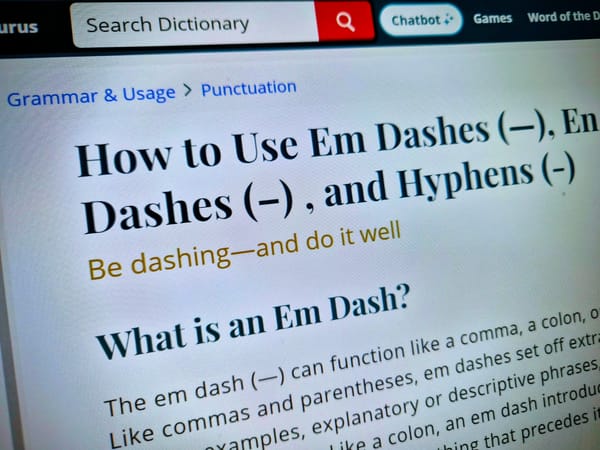For something so small, the em dash has had a remarkably noisy year. A punctuation mark that most people barely thought about suddenly became a symbol of AI writing, a kind of “tell” that sparked more debate on social media than seems reasonable for a horizontal line.
Yet here we are again, because ChatGPT now says it will finally stop using em dashes when you tell it not to.
TechCrunch reported the update last week, noting that the model will now respect custom instructions designed to banish the em dash. OpenAI CEO Sam Altman called it a “small-but-happy win”, which sounds about right. After months of people complaining that ChatGPT used em dashes almost compulsively, OpenAI seems to have nudged the model into listening.
But the fuss about the em dash has always amused me. Yes, people on X, Reddit and elsewhere have argued fiercely about it, sometimes as if punctuation itself were a moral question. Some insist the em dash is a sign of laziness, or a crystal-clear indicator that a narrative has been AI-generated; others say it’s part of their writing heritage and refuse to surrender it to the machines.
What’s often missing, though, is the simple point that large language models are trained on what we write – the books, articles, posts and documents we publish every day. If AI leans heavily on em dashes, it’s because humans do too. We fed the machine our writing habits; it’s no surprise that it learned them.
Shel and I even devoted an entire episode of our FIR podcast in September to this very topic, exploring how a single punctuation mark became a cultural flashpoint. It was one of our more unexpectedly entertaining conversations. Sometimes the small things reveal the big shifts.
Why this matters more than punctuation
And the shift here is worth paying attention to. The conversation about the em dash isn’t really about typography at all. It’s about how people judge the authenticity of text in an era when machine-generated writing is everywhere. Some writers worried their own natural use of the em dash made them look as if they’d taken a shortcut with AI. Others saw the debate as a distraction from the more profound questions: voice, tone, ownership and the changing rhythms of communication.
That broader discussion has been bubbling for months. Commentators have noted that the “AI dash” emerged because ChatGPT relied on familiar writing structures. Students have noticed it as a pattern they think they can spot.
And people in communication roles – the ones who care about how language signals intent and identity – have been trying to work out what this says about how we read one another now.
So OpenAI’s update matters not because it fixes a punctuation quirk, but because it acknowledges that style is part of trust. If you tell ChatGPT to avoid em dashes, it should. Whether it replaces them with en dashes, hyphens or rewrites the sentence entirely is still unclear. But the change reminds us that control of voice still sits with the human, not the model.
In my case, I’ve asked ChatGPT for months to stick to en dashes with a space on either side. When I shared drafts I'd written or asked it to write an outline for an article, sometimes it listened; sometimes it didn’t. Now, apparently, it will behave more reliably. I’ll believe it when I see it.
What interests me most isn’t the fix itself, but what it represents. We are shaping tools that learn from us, mirror us and sometimes exaggerate our quirks. When we push back – even on something as minor as a dash – we’re really arguing for the right to shape how our voices sound in a world where machines can imitate them.
It’s a small update, yes. But in the ongoing dance between human intention and machine assistance, even the smallest steps change the rhythm.


















